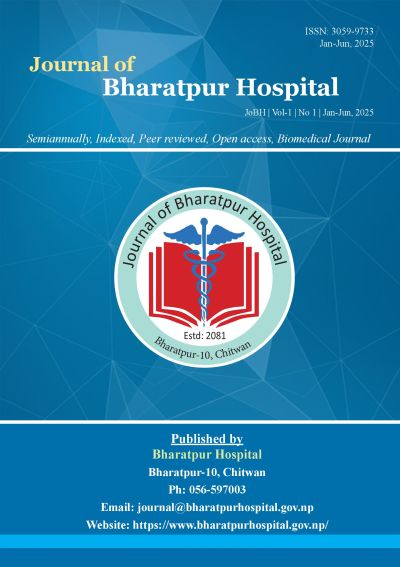Oculocutaneous Albinism
DOI:
https://doi.org/10.3126/jobh.v1i1.78520Keywords:
Oculocutaneous albinism, OCAAbstract
Oculocutaneous albinism (OCA) is a group of inherited autosomal recessive disorders characterized by reduced or absent melanin production, affecting pigmentation in the skin, hair, and eyes. This leads to significant visual impairments, including foveal hypoplasia (underdevelopment of the central retina), nystagmus (involuntary eye movements), and refractive errors such as myopia and astigmatism. This report discusses the case of a 14-year-old girl from Chitwan, Nepal, with a known history of OCA, who presented with blurred vision and photophobia. Ophthalmologic examination revealed intermittent exotropia (outward deviation of the eyes), nystagmus, and abnormal fundus vascularization.
She was diagnosed with OCA-associated visual impairment and prescribed corrective glasses for myopic astigmatism, along with tinted lenses to manage photophobia. This case highlights the need for early diagnosis, refractive correction, and regular follow-up to optimize visual function and quality of life in individuals with OCA. Multidisciplinary care is essential for long-term management.
Downloads
Downloads
Published
How to Cite
Issue
Section
License
Copyright (c) 2025 The Author(s)

This work is licensed under a Creative Commons Attribution-NonCommercial-NoDerivatives 4.0 International License.
This license enables reusers to copy and distribute the material in any medium or format in unadapted form only, for noncommercial purposes only, and only so long as attribution is given to the creator.




